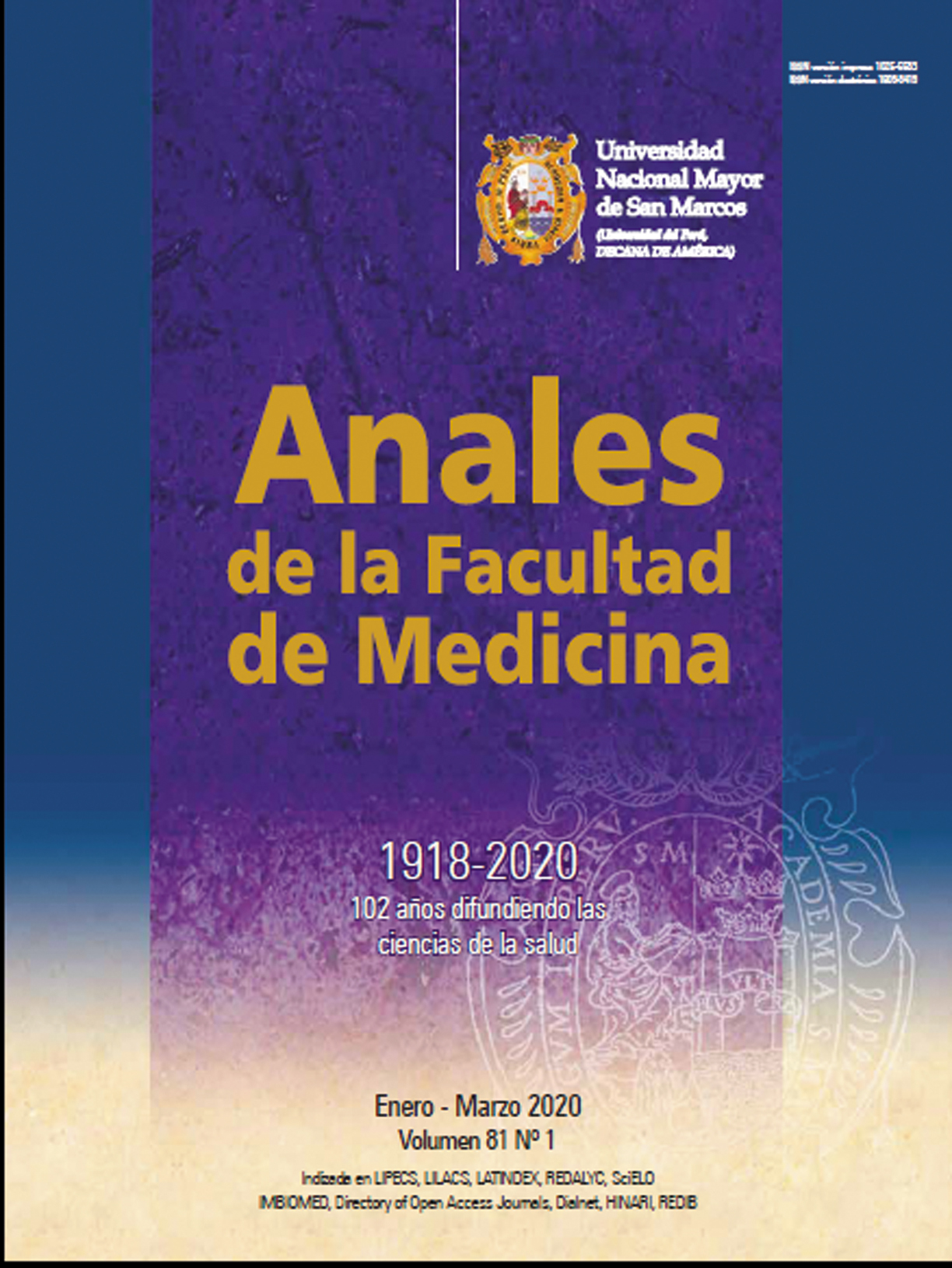COVID-19: Antiviral treatment in mild cases could be useful at this time
DOI:
https://doi.org/10.15381/anales.v81i1.17685Keywords:
Coronavirus Infections, SARS Virus, Hydroxychloroquine, Azithromycin, Lopinavir, Ritonavir, PeruAbstract
COVID-19's lethality as well as its rapid spread are responsible for the current world crisis; therefore, from the beginning, drugs with antiviral action against this agent were sought. It is impossible, for now, to know which person in a mild state will develop a high viral load or have a predisposition to develop an extreme response from the immune system, but early treatment in mild cases would not only guarantee greater efficacy, but would avoid severe cases. Currently, there are no double blind, randomized clinical trials or meta-analyzes available to make safe decisions; meanwhile, the pandemic is advancing in our country, generating pain and death. In this context, in Peru, scientific societies have expressed the need for the use of antiviral drugs, even with little evidence, based on the probability of success prior to treatment, for their in vitro effects and for their early clinical effects, such as: chloroquine, hydroxychloroquine, azithromycin, lopinavir, ritonavir. Thus, in the country since march 29, 2020, there is a technical standard from the Ministry of Health, which facilitates the use of these at the national level for moderate and severe cases. We believe that under a structured system, first-level care centers could treat mild cases of COVID-19. Our country, through strategies for the prevention and control of TB and ITS/HIV/AIDS, has experience in managing treatment programs at this level. The costs will be less than those required to strengthen the third level of care.
Downloads
Published
Issue
Section
License
Copyright (c) 2020 Anales de la Facultad de Medicina

This work is licensed under a Creative Commons Attribution-NonCommercial-ShareAlike 4.0 International License.
Those authors who have publications with this magazine accept the following terms:
- Authors will retain their copyrights and guarantee the journal the right of first publication of their work, which will be simultaneously subject to Creative Commons Attribution License that allows third parties to share the work as long as its author and its first publication this magazine are indicated.
- Authors may adopt other non-exclusive licensing agreements for the distribution of the version of the published work (eg, deposit it in an institutional electronic file or publish it in a monographic volume) provided that the initial publication in this magazine is indicated.
- Authors are allowed and recommended to disseminate their work over the Internet (eg: in institutional telematic archives or on their website) before and during the submission process, which It can produce interesting exchanges and increase quotes from the published work. (See El efecto del acceso abierto ).



